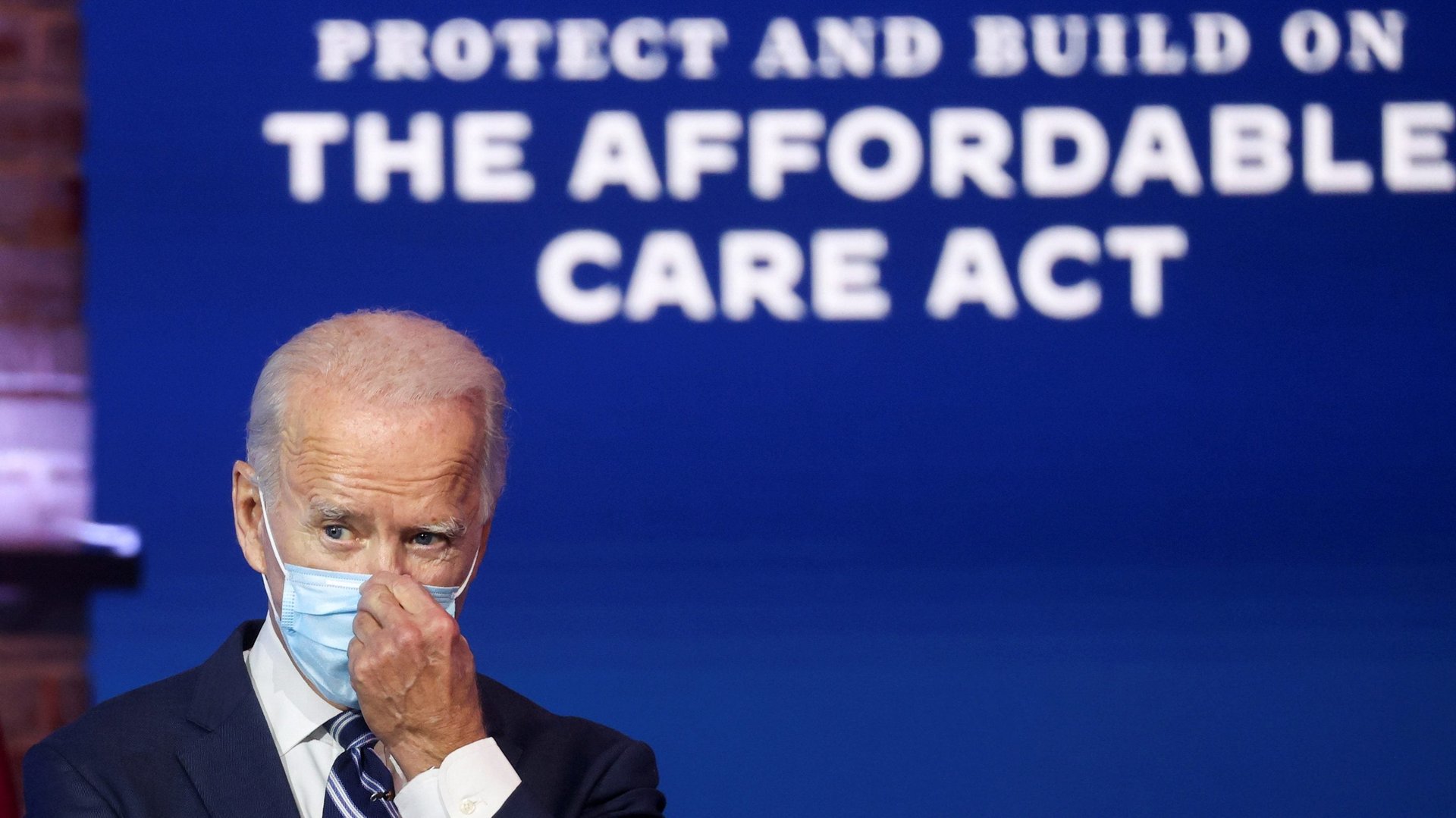The more the US invests in Obamacare, the more unsustainable it looks
Obamacare has never been more successful. It’s also never been more obviously unsustainable.


Obamacare has never been more successful. It’s also never been more obviously unsustainable.
In the wake of Covid-19 and the subsequent rise in unemployment, more Americans than ever turned to the Affordable Care Act (ACA)’s marketplace to buy health insurance. Since early March, when president Joe Biden started a new open-enrollment period, more than 200,000 Americans have signed up. In 2020, 11.5 million health insurance policies were bought through the ACA, and of them, 87% had some form of government subsidy. This number is likely to go up this year, and the latest stimulus plan includes $22 billion in further subsidies toward insurance premiums. The plan broadens the eligibility criteria for subsidies and will reduce monthly premiums for qualifying buyers of up to $50.
According to the Congressional Budget Office (CBO), the overall cost of this policy will be $34 billion—with over $12 billion in lost revenue added onto the $22 billion direct investments (pdf, p. 10). About a third of the added investment will go toward new enrollments, and the remaining toward reduced premiums for those who already qualified for the ACA marketplace subsidies.
The CBO estimates the new policy will cost $8,500 per enrolled person annually, bringing the cost of marketplace subsidies up 40% compared to 2020. It’s too much—and yet not enough to guarantee every American can afford healthcare without it being a strain on their finances, or that the coverage would be sufficient to avoid debt.
It’s not a sustainable proposition, and the more money is invested in the ACA, the clearer it is that it’s just a Band-Aid. According to the most recent data available from the World Bank, Americans spend about $11,000 per capita annually on healthcare, which is over twice as much as the average of other wealthy countries.
Paradoxically, the US government spends a lot more per person in healthcare than comparable countries that provide full healthcare coverage to their citizens. It spends the most in the world, in fact.
The huge difference isn’t a function of the quality of care or its outcome (in fact, the US has shorter life expectancy than other rich countries) but on the sheer cost of services, which goes up according to the market in a privatized health environment. Since healthcare isn’t dispensable—customers will pay what they have to—there is no incentive in a privatized market to keep prices down.
Radical changes, such as the introduction of a single-payer system like Medicare for All, would make the system more similar to that of countries, where a single public provider has the negotiating power to control the prices.
Obamacare, however, doesn’t do that. Instead, it essentially uses government subsidies to help individuals pay for overpriced coverage, but doesn’t have any leverage to keep prices down. The promise that Obamacare would help lower the cost of healthcare, through the marketplace and with a reduction in healthcare inefficiencies, simply didn’t come true. Healthcare spending continued to go up since Obamacare subsidies were first applied in 2014, both as a percentage of GDP and in terms of absolute dollars.
Biden is no fan of Medicare for All, though he promised to create a public option, essentially allowing individuals to buy into Medicare if they wish to. Were he able to do that, it might help keep the cost of healthcare under control—something merely expanding Obamacare subsidies hasn’t been—and won’t be—able to do